If you’re an admirer of native flowering plants and looking to establish one in your landscape, look no further than the extravagant Gymea Lily.
This mighty specimen boasts a lush rosette of a large number of sword-shaped, strappy leaves below a flower spike that, at its apex, produces a large cluster of blood-red toothbrush-like, trumpet-shaped flowers.
It’s hard to find another specimen that can supersede this plant’s ability to majestically influence outdoor spaces while being so easy-going and decorative simultaneously.
Here is your complete guide to growing and caring for the Gymea lily.
More...
Family: | Doryanthaceae |
|---|---|
Genus: | Doryanthes |
Species: | D. excelsa |
Common Names: | Gymea lily, flame lily, spear lily |
Location: | Outdoor |
Type: | Flowering plant |
Growth: | Foliage is 1 to 4 metres tall and wide (flower spike up to 6 metres tall) |
Sun requirements: | Full sun to part shade |
Foliage Colour: | Green |
Flower Colour: | Red |
Flowering: | Spring |
Maintenance level: | Low |
Poisonous for pets: | Toxic to cats and dogs |
Getting to Know the Gymea Lily
Today this hardy, adaptable native is commonly used in landscape gardening across the country, sprucing up spaces with its massive clumps of foliage shoots and its epic flower spike that produces lively red flowers.
During winter on established plants, the flower spike will grow from the centre of the foliage until it reaches up to 6 metres tall in spring, attracting nectar-feeding birds with its blooms. Regardless of your garden setting, this plant can certainly add its own flair and presence.

Botanically labelled as Doryanthes excelsa, common names now also include flame lily and spear lily. There are only two species of Doryanthes, both forming a part of their very own family, Doryanthaceae.
“Dory” means spear, “Anthos” means flower and excel can be translated to lofty or distinguished, which perfectly fits this plant's persona. It is endemic to the coastal areas of New South Wales near Sydney where it can be found in woodland and dry forest environments.
The Sydney suburbs of Gymea and Gymea Bay are named after this lily. Being such a hardy native, this plant can grow in any of our domestic climates.
Doryanthes excelsa Growing Habit
In cultivation, Doryanthes excelsa grows with foliage around 1 to 4 metres tall and wide with a flower spike that can grow up to 6 metres tall.
However, in optimal conditions, this plant can grow bigger so it is best to establish these flowering natives in larger landscapes and spaces for the best results.
A great choice for the easy-care gardener, the flame lily is most commonly used as a bold feature specimen in native or more orthodox gardens alike thanks to its profuse foliage and eye-catching flowers.
It can be grown in very large containers that are at least 50cm in diameter but potted plants may not flower as much or at all. The cut leaves also make for an excellent addition to floral arrangements around the house.
All parts of the plant are toxic to cats and dogs, especially when ingested.
Introducing the Other Doryanthes
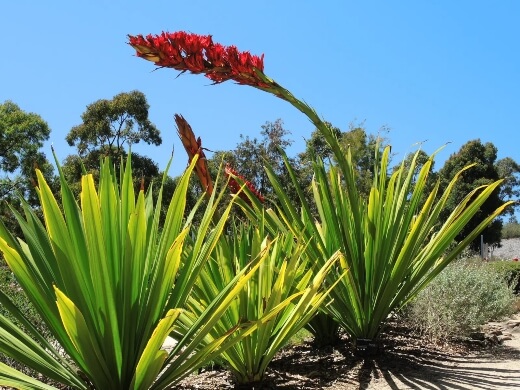
Doryanthes palmeri
Also known as giant spear lily, this species is also endemic to eastern Australia and it also features a rosette of large amounts of sword-like, vibrant green leaves. It flowers in spring on a stalk that can reach 5 metres in height.
It is considered a succulent perennial, also being widely used as an ornamental addition in local gardens. This species is a lot more sensitive to frost so it is normally grown in warmer climate zones as it needs more protection during the winter months.
The flower spike is a lot more bulbous and ovate than its relative, producing many small clusters of deep-red flowers amidst the stem’s lush green foliage.
This species does require more care and specific conditions to thrive, hence why it is not as popular as Doryanthes excelsa.
How to Grow Gymea Lily
After flowering in spring, mature plants will produce oval-shaped reddish-brown capsules in late summer. These capsules can be opened to retrieve seeds which you can use to grow your plant.
However, spear lilies grown from seed can take 8 to 10 years to flower which many gardens won’t be prepared to do. As they grow, they will still make for an ornamental landscaping addition even without flowers.

Source: realworldgardener.podbean.com
Gymea Lily Propagation
Thanks to their form and root systems, these plants can also easily be propagated by using division. Established clumps of foliage can be divided to form new, true-to-type specimens. Alternatively, for the fastest flowering and ease of establishment, large nursery plants are another excellent option.
If you happen to find one at a reasonable price, many would say rather just go for that as this plant can tolerate being transplanted very well and it will flower much faster versus growing from seed or propagating through division.
This will allow you to reap the benefits of its spectacle far sooner in your landscape.
Growing Doryanthes excelsa from Seed
- Once your seed capsules begin to split open in the late summer, the disc-like winged seeds will be ripe and ready for growth. The best planting time is during autumn.
- Plant your seeds as fresh as possible into prepared growing containers filled with a high-quality potting mix.
- Cover them very lightly with soil as they need healthy lighting to germinate effectively.
- Place the seeds in a warm and sheltered location with bright but indirect light.
- Water as needed to keep the soil lightly moist but never wet and soggy.
- Seeds usually take 1 to 2 months to successfully germinate and sprout.
- As the seedlings grow, be sure to transplant them into larger containers every couple of months to ensure consistent, luscious growth.
- After about 12 to 14 months, the young plants will be big enough to plant in the garden.
Propagating Gymea Lily Using Division
- Older, established clumps of flame lily can easily be multiplied by dividing the parent plant into individual shoots.
- Using a spade, shovel or bigger mechanical excavator for larger plants, gently lift the clump of the plant from the ground and using your hand, simply pull the shoots apart to gather your divided sections.
- Using a sharp and clean pair of scissors or secateurs, cut back the roots and leaves of the shoots slightly so they can fit snugly into their large growing containers.
- Fill with a high-quality all-purpose potting mix for the best results. (For a quality pair, check out our review of the best secateurs available online.)
- Once your new shoots have developed enough and the roots begin to appear at the bottom of the container, they should be ready to be transplanted into your desired location in the garden.
- Alternatively, keep transplanting into larger containers with fresh soil if you intend on exclusively growing your Gymea in containers to be placed around the garden.
Ideal Conditions for Planting Doryanthes excelsa
This very tough and resilient plant can grow even in harsh environments, making it perfect for all growers despite previous experience.
It, therefore, doesn’t have many strong needs when growing in cultivation. Here are some of the basic growing and planting conditions.
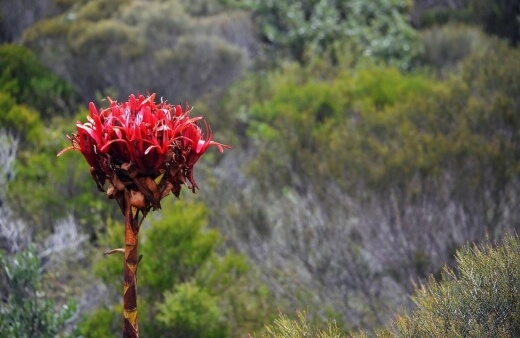
Ideal Sunlight for the Gymea Lily
This plant can be grown in full sun positions to even deep shade positions in the garden. The less light it gets, the less likely it is that flowering will occur and the deeper the green will be in its foliage.
Soil Recommendations
The most essential component for your soil is that it features good drainage as these plants do not respond well to sitting with wet feet for prolonged periods.
Generally, Gymea can tolerate all soil types. Just make sure you plant and grow yours in well-draining and deep soil and your plant should thrive. For container growing, use a premium potting mix for the best results.
Quick Planting Tips
- Planting holes should be at least twice as wide and to the same depth as the root ball of your plant.
- Mulch with an organic mulch after planting. Mulch only around the base of the plant, keeping it away from the crown. (This 100% Natural Cedar Mulch is perfect for both garden or container plants).
- For containers, choose a container that is at least twice as big as your plant. Position in your garden so it still gets full sun to partial shade. Containers must feature good drainage.
- You can mulch container-grown plants with wood chips or cedar after planting and water in well.
Gymea Lily Care Tips
As mentioned, these plants are mostly fuss-free additions to the garden. They are fire resistant and also very drought tolerant once established.
While growing, flower stems can be sensitive to frost but these hardy natives can be grown successfully in cooler climates as well. Here is some of the basic care your plant will love you for as it grows.
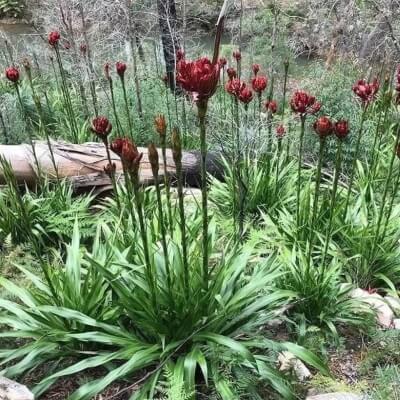
Source: seedstreet.com.au
Pruning Needs
Prune as needed to remove old or damaged leaves and flower stems after the flowering seasons. To create a more upright shape overall as your plant grows, remove any lower leaves at the base of your plant and be sure to remove any spent flowers and stems.
Refer to our tips on Pruning Australian Native Plants for more info.
Watering Routine
Always water well after planting and as the plant establishes itself. It will require little water once fully matured in your landscape. Be sure to first check if your soil is dry before watering as overwatering can cause unwanted issues.
Fertilising Spear Lily
Your plant will respond well to being fed in its active seasons. In spring, fertilise with any quality complete garden fertiliser to encourage growth and prolific blooms.
Doryanthes excelsa Pests & Diseases
Overall, this native plant is relatively resistant to pests and diseases. Mealybugs can pose a small problem in certain conditions but they can easily be dealt with. They will usually appear on the stems and flowers of your plant.
You can use a soap and water mixture to spray them and knock them off the foliage. Alternatively, using a quality neem oil is always a reliable method to get rid of these little guys. Other than that, pests and diseases don’t really affect these hardy plants.
Gymea Lily Frequently Asked Questions
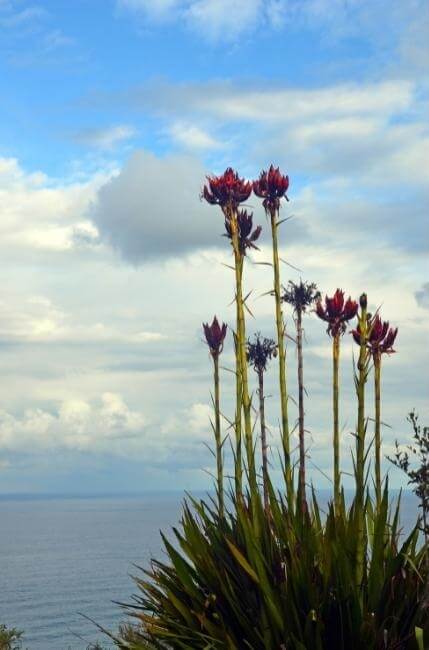
How quickly do Gymea lilies grow?
A plant can take 5 to 20 years to develop and reach full maturity, depending on the growing conditions.
How much are Gymea lilies?
Young and healthy nursery plants can cost between $2.95 and $21.90 depending on the plant's size. If you intend on growing in containers, those will also cost an additional fee.
How often does a Gymea lily flower?
These plants will flower in spring with seeds being released in late summer. However, plants grown from seed will take up to 10 years to flower in gardens.
If you’re looking for other beautiful natives to plant alongside your Gymea, here are guides to growing some of our most impressive native flowering plants:
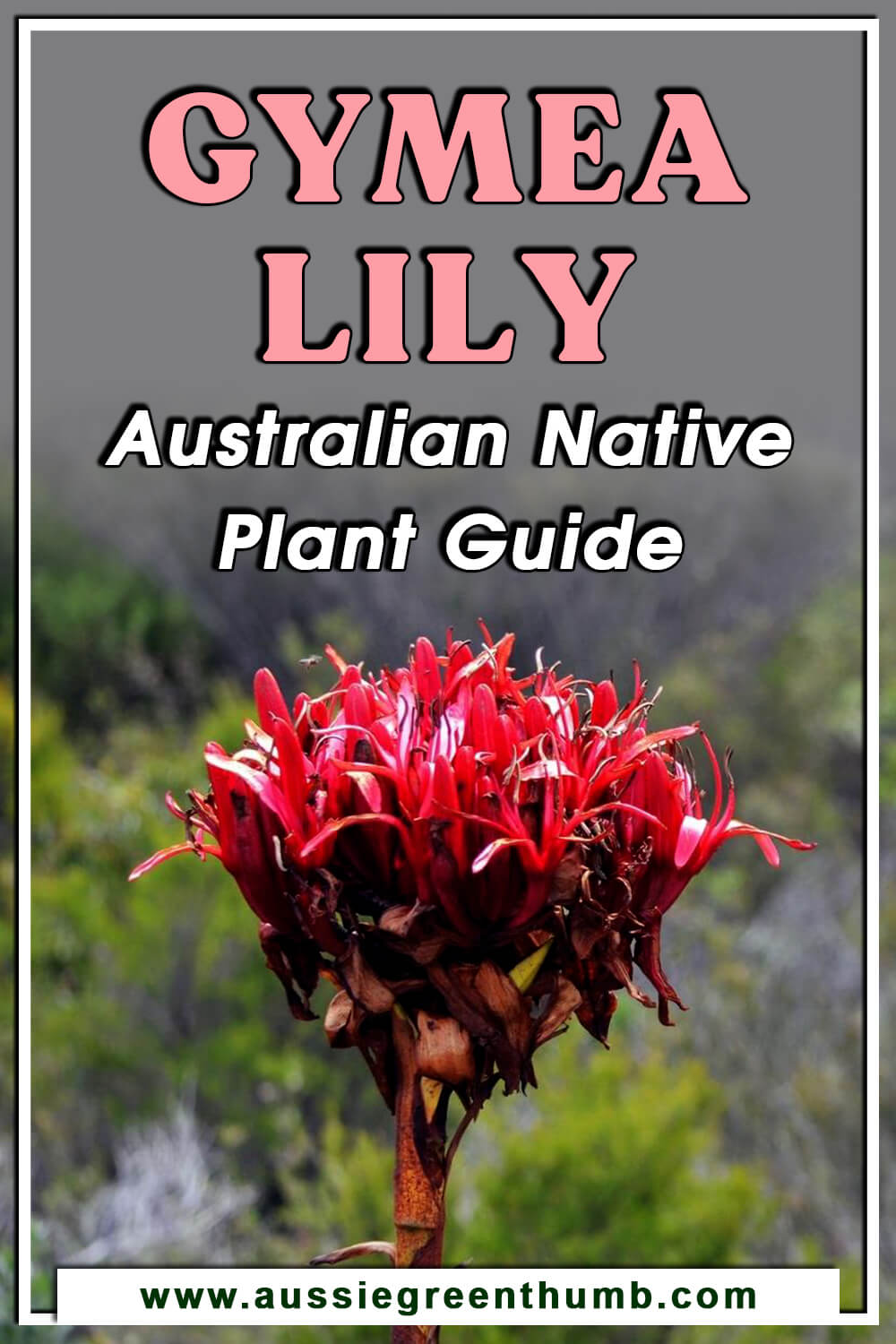
Add some Native Glamour to Your Garden with the Gymea Lily
Being one of our most unique native flowering plants, the Gymea lily can effortlessly add glamour and spectacle to any outdoor space, regardless of the setting or surrounding companions.
With its rosette of bright foliage, larger-than-life flower spike and its blood-red, nectar-producing little lively flowers, it's no wonder this plant has become so widely used in larger landscapes across the country.
Whether grown in your garden bed or potted in large containers around the garden, the Gymea lily is an excellent option for those who are looking at establishing a native ornamental flowering plant in their spaces.
Published on July 18, 2022 by Nathan Schwartz
Last Updated on February 22, 2024





Hi,
I was just wondering if it might be possible to grow Doryanthes Palmeri in the tropics, for e.g. near Cooktown? I'm just concerned that the soil might have inadequate drainage for this species.
Alternatively, would Gloucester in NSW be OK? I understand the species is not very resilient to frost. Thanks!
Cheers,
Adam
Hi Adam,
I’ve never heard of the fruit being eaten, but I know the seams and roots are. The flowers have a super thick and sugary nectar too – which might be worth harvesting. I’m fascinated though, so definitely keep us posted when this is all up and running!
In terms of growing in Cooktown, I think you should be fine. It’s native to pretty much every part of Eastern Australia, and as long as it doesn’t get below 5°C in winter it’ll come back year in year out.
I’d avoid Gloucester, just because winter can be a bit less reliable.
With the soil question, it actually quite likes being moist during the growing season. Cooktown’s natural soil conditions are mostly sandy or sediment over granite, which are reasonably well drained and should provide the right acidity for Doryanthes too.
Best regards,
Gary Clarke